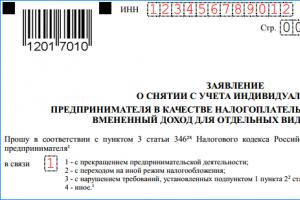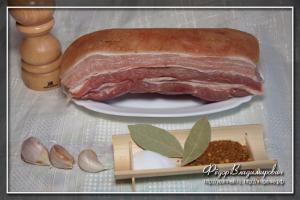CHAPTER FIRST,
in which we meet Winnie the Pooh and some bees
Well, here is Winnie the Pooh.
As you can see, he goes down the stairs after his friend Christopher Robin, head down, counting the steps with the back of his head: boom-boom-boom. He doesn’t yet know any other way to get down the stairs. Sometimes, however, it seems to him that some other way could be found, if only he could stop babbling for a minute and concentrate properly. But alas, he has no time to concentrate.
Be that as it may, he has already come down and is ready to meet you.
Winnie the Pooh. Very nice!
You're probably wondering why his name is so strange, and if you know English, you'll be even more surprised.
This unusual name was given to him by Christopher Robin. I must tell you that Christopher Robin once knew a swan on a pond, whom he called Pooh. It was a very appropriate name for a swan, because if you call a swan loudly: “Poo-hoo!” Pooh!” - and he doesn’t respond, then you can always pretend that you were just pretending to shoot; and if you called him quietly, then everyone will think that you just blew on your nose. The swan then disappeared somewhere, but the name remained, and Christopher Robin decided to give it to his bear cub so that it would not be wasted.
And Winnie was the name of the best, kindest bear in the zoo, whom Christopher Robin loved very, very much. And she really, really loved him. Whether she was named Winnie in honor of Pooh, or Pooh was named in her honor - now no one knows, not even Christopher Robin's dad. He once knew, but now he has forgotten.
In a word, now the bear’s name is Winnie the Pooh, and you know why.
Sometimes Winnie the Pooh likes to play something in the evening, and sometimes, especially when dad is at home, he likes to sit quietly by the fire and listen to some interesting fairy tale.
This evening…
- Dad, how about a fairy tale? - asked Christopher Robin.
- What about a fairy tale? - Dad asked.
- Could you tell Winnie the Pooh a fairy tale? He really wants it!
“Maybe I could,” said Dad. - Which one does he want and about whom?
- Interesting, and about him, of course. He's SUCH a teddy bear!
- Understand. - said dad.
- So, please, daddy, tell me!
“I’ll try,” said dad.
And he tried.
A long time ago - it seems like last Friday - Winnie the Pooh lived alone in the forest, under the name Sanders.
- What does “lived under a name” mean? - Christopher Robin asked immediately.
- This means that on the plaque above the door it said "Mr. Sanders" in gold letters, and he lived under it.
“He probably didn’t understand it himself,” said Christopher Robin.
“But now I understand,” someone muttered in a deep voice.
“Then I will continue,” said dad.
One day, while walking through the forest, Pooh came out into a clearing. In the clearing there grew a tall, tall oak tree, and at the very top of this oak tree someone was buzzing loudly: zhzhzhzhzh...
Winnie the Pooh sat down on the grass under a tree, clasped his head in his paws and began to think.
At first he thought like this: “This is - zzzzzzzhzh - for a reason! No one will buzz in vain. The tree itself cannot buzz. So, someone is buzzing here. Why would you buzz if you are not a bee? I think so!”
Then he thought and thought some more and said to himself: “Why are there bees in the world? To make honey! I think so!”
Then he stood up and said:
Why is there honey in the world? So that I can eat it! In my opinion, this way and not otherwise!
And with these words he climbed the tree.
He climbed, and climbed, and climbed, and along the way he sang to himself a song that he himself immediately composed. Here's what:
The bear loves honey very much!
Why? Who will understand?
In fact, why
Does he like honey that much?
So he climbed a little higher... and a little more... and just a little bit higher... And then another chugging song came to his mind:
If bears were bees,
Then they wouldn't care
Never thought
Build a house so high;And then (of course, if
Bees - they were bears!)
We bears would have no need to
Climb such towers!
To tell the truth, Pooh was already pretty tired, which is why Pyhtelka turned out to be so plaintive. But he only has a very, very, very little bit left to climb. All you have to do is climb this branch and...
...Mother! - Pooh shouted, flying a good three meters down and almost hitting his nose on a thick branch.
Eh, why did I just... - he muttered, flying another five meters.
But I didn’t want to do anything bad... - he tried to explain, hitting the next branch and turning upside down.
And all because,” he finally admitted, when he somersaulted three more times, wished all the best to the lowest branches and smoothly landed in a prickly, prickly thorn bush, “it’s all because I love honey too much!” Mother!…
Pooh climbed out of the thorn bush, pulled the thorns out of his nose and began to think again. And the very first thing he thought about was Christopher Robin.
- About me? - Christopher Robin asked in a voice trembling with excitement, not daring to believe such happiness.
- About you.
Christopher Robin said nothing, but his eyes grew larger and larger, and his cheeks grew pinker and pinker.
Audio tale Winnie the Pooh work by Alan Milne. You can listen to the story online or download it. The audiobook "Winnie the Pooh" is presented in mp3 format.
Audio tale Winnie the Pooh, contents:
The audio tale Winnie the Pooh is a funny story about the adventures of a funny little bear and his friends. The story, which you can start listening to online right now, dates back to the very moment when Pooh, going out for a walk, heard a loud buzzing in the tree trunk.
He rightly assumed that there was honey there and went to check this pleasant guess. The guess was confirmed, but the bear fell and decided to ask his friend Pyatochka for help. He gave him a balloon, on which Pooh managed to fly to the very top of the tree. The angry bees attacked Winnie, and the bear asked the pig to shoot the ball.
Soon, Winnie and Piglet went to visit the rabbit, where Pooh heartily enjoyed the treat. He ate so much that he couldn’t even crawl out of the rabbit hole and was forced to wait until he lost weight. True, he sneezed faster than he lost weight and flew out into the street like a bullet!
In this friendly forest there lived a sad donkey who was always unlucky, especially on Friday. This time it was Eeyore’s birthday, but no one brought him a single gift.
He also lost his tail and was in great sadness. Vinnie decided to cheer up his friend and present him with a pot on which a smart owl wrote a congratulation.
Piglet gave Eeyore a burst balloon, and Owl solemnly handed Donkey his personal tail! The birthday party in the online audio fairy tale was a success!!!
This story is about how Winnie the Pooh and his friends helped Eeyore find his tail. They learned that it turns out that helping is not so easy... 
One morning Winnie the Pooh woke up terribly hungry. He reached into his Kitchen Cabinet and found that all his honey pots were already empty.
This was already a problem not only for Pooh, but also for his stomach, and he went into the forest to look for bee honey.
Soon Winnie the Pooh met his friend Eeyore. Unfortunately he had no honey.

But the donkey was very worried because he had no tail at all! Winnie the Pooh was very upset for his friend and immediately told him: “I’ll find your tail, and then I’ll go look for honey.”
At that very time they heard an Owl descending from a tree towards them. It turns out that she heard their entire conversation and also offered her help in finding the missing tail. 
After this, the three friends went to look for Christopher Robin.
Soon everyone gathered around the boy’s house and he announced the upcoming competition loudly for everyone to hear:
- Whoever finds a suitable tail for Eeyore will receive a pot of delicious honey!
Winnie the Pooh was especially happy about the prize, and not only he, but his hungry tummy too.  He remembered his cuckoo clock and thought that it would be the most suitable tail for Eeyore. Winnie the Pooh quickly ran home and brought the watch, he helped Eeyore attach it to the back instead of a tail and at first the donkey was very happy, but then, when he wanted to sit down, he, of course, sat right on the watch and a loud sound was heard - it was Eeyore who broke the watch .
He remembered his cuckoo clock and thought that it would be the most suitable tail for Eeyore. Winnie the Pooh quickly ran home and brought the watch, he helped Eeyore attach it to the back instead of a tail and at first the donkey was very happy, but then, when he wanted to sit down, he, of course, sat right on the watch and a loud sound was heard - it was Eeyore who broke the watch . 
Well, I had to look for another tail. Piglet offered him his ball, but it didn’t fit either: as soon as it was tied instead of a tail, the donkey began to rise up along with the ball and could even fly away! 
Eeyore was very brave and he tried everything possible options tails invented by his friends. But after many unsuccessful attempts, he finally said sadly: 
- There’s nothing to be done, somehow I’ll get used to living without a tail.
If you ask anyone, be it a child or an adult, who Winnie the Pooh is, everyone will remember the cute teddy bear with sawdust in his head from the favorite children's cartoon. Funny phrases of the characters are often quoted, and songs are remembered by heart. The cartoon character was actually created on the basis of a cycle of two works, which were written primarily for an adult audience. Many even think that the creator of Vinnie is some Soviet writer, and are surprised to learn that in fact the cheerful, harmless bear came to us from good old England. So who came up with this extraordinary character?
Author of "Winnie the Pooh"
The creator of the world famous teddy bear was the English writer Alan Alexander Milne. Scottish by birth, he was born in London in 1882 into the family of a teacher. Creativity was encouraged in the family, and he made early attempts at writing in his youth. Milne's personality was influenced by the famous writer Herbert Wells, who was Alan's teacher and friend. Young Milne was also drawn to the exact sciences, so after graduating from college he entered Cambridge to study mathematics. But the calling to be closer to literature won out: throughout his student years he worked in the editorial office of Grant magazine, and later helped editor of the London humorous publication Punch. It was there that Alan first began publishing his stories, which were successful. After nine years of work in publishing, Milne went to the front as the First World War began. World War. Having been wounded, he returned home to ordinary life. Even before the start of the war, he married Dorothy de Selincourt, and after seven years of family life, their long-awaited son Christopher Robin was born, partly thanks to whom the fairy tale “Winnie the Pooh” appeared.

History of the creation of the work
When his son was still a three-year-old baby, Alan Milne began writing children's fairy tales. Little Bear first appears in one of two collections of poems for Christopher, also by Milne. Winnie the Pooh did not get his name right away; at first he was just a nameless bear. Later, in 1926, the book “Winnie the Pooh” was published, and two years later - its sequel, which was called “The House on Pooh Edge”. Almost all the characters were based on real Christopher Robin toys. Now they are kept in the museum, and among them there is a donkey, a pig, and, naturally, a teddy bear. The bear's name was really Vinnie. It was given to him when Robin was 1 year old, and since then it has become the boy's favorite toy. The bear is named after the Winnipeg bear, with whom Christopher became very close. Amazingly, Alan Milne never read his fairy tales to his son; instead, he preferred the works of another author. But this was more likely because the author addressed his books primarily to adults, in whose souls a child still lives. But still, the fairy tale “Winnie the Pooh” found hundreds of grateful young readers for whom the image of the mischievous bear cub was close and understandable.
The book not only brought Milne a significant income of two and a half thousand pounds sterling, but also enormous popularity. The author of "Winnie the Pooh" has become a favorite children's writer for several generations right up to the present day. Although Alan Alexander Milne wrote novels, essays and plays, few people read them now. But, according to one survey conducted in 1996, it was the story about Winnie the Pooh that took 17th place in the list of the most significant works of the past century. It has been translated into 25 languages.
Many researchers find a lot of autobiographical details in the book. For example, Milne “copied” some of the characters from real people. Also, the description of the forest coincides with the landscape of the area where the author of “Winnie the Pooh” himself and his family loved to walk. Among other things, Christopher Robin is one of the main characters

It is impossible not to mention the English artist Shepard, who drew illustrations for Milne’s book. It was based on his sketches that the Disney cartoon was filmed in 1966. Many more film adaptations followed. Below are the characters of the most famous of them, created in 1988.

The Soviet reader became acquainted with the “bear with only sawdust in his head” in 1960, when Boris Zakhoder’s translation of Milne’s book was published. In 1969, the first of three Pooh cartoons was released, and the next ones were released in 1971 and 1972. Fyodor Khitruk worked on them together with the author of the translation into Russian. For more than 40 years, the carefree cartoon bear has been entertaining both adults and children.
Conclusion
Winnie the Pooh - main character two prose books by the English writer Alan Alexander Milne. The stories about the “bear with sawdust in his head,” written for his only son Christopher, became a worldwide success. Ironically, it was the wonderful little bear cub, beloved by the whole world, that overshadowed almost the entire work of the already famous English playwright at that time...
Alan Alexander Milne was quite a “grown-up” writer and wrote serious books. He dreamed of earning fame as a great detective writer, writing plays and short stories. But...On December 24, 1925, on Christmas Eve, the first chapter of Pooh, “in which we first meet Winnie the Pooh and the bees,” was published in the London evening newspaper and broadcast on BBC radio.
Both prose books about Winnie the Pooh are dedicated to "Her" - Milne's wife and Christopher Robin's mother, Dorothy de Selincourt; these dedications are written in verse.

Winnie the Pooh: Journey to Russia
The wonderful teddy bear Winnie the Pooh very soon after his birth became very popular and began to travel throughout all countries of the world. Books about his adventures were published in many languages of the world, including Russian.
The first translation of works about Winnie the Pooh into Russian was published in 1958 in Lithuania. However, the best and most famous translation is the one performed by the writer Boris Vladimirovich Zakhoder.
In the same 1958, the writer was looking through the English children's encyclopedia in the library and quite by chance came across an image of a cute bear cub.
The writer liked this bear cub, named Winnie-the-Pooh, so much that he rushed to look for a book about him and began work on translating it into Russian. The first edition of the book in Russian was signed for publication on July 13, 1960. 215,000 copies were printed.
 Illustration for a book about Winnie the Pooh, E.H. Shepard.
Illustration for a book about Winnie the Pooh, E.H. Shepard. Russian Winnie the Pooh
At first the book was called “Winnie-the-Pooh and the rest”, but then it was called “Winnie-the-Pooh and Everyone-all-all”. The book immediately became very popular and was published again in 1965. And in 1967, Winnie the Pooh was published in Russian by the American publishing house Dutton, which published most of the books about Pooh.
Boris Zakhoder always emphasized that his book is not a literal translation of Alan Milne’s book, but is a retelling, a “comprehension” of the book in Russian. The text of Russian Winnie the Pooh does not always literally follow the original.
The tenth chapter from Milne's first book and the third chapter from the second are omitted. And only in 1990, when Winnie the Pooh turned 30 years old in Russian, did Zakhoder translate the missing chapters. However, the Russian Winnie the Pooh has already managed to enter children's literature in an “abbreviated” form.

Film adaptation of Winnie the Pooh
Since the 1960s, this book has become extremely popular not only among children, but also among their parents, as a wonderful book for family reading. Therefore, the adventures of friends were filmed.
Director Fyodor Khitruk at the Soyuzmultfilm film studio created three animated films about Winnie the Pooh:
- In 1969 - Winnie the Pooh
- In 1971 - Winnie the Pooh comes to visit
- In 1972 - Winnie the Pooh and Worry Day
The script for these cartoons was written by Khitruk in collaboration with Zakhoder. Unfortunately, their relationship was difficult, and only three episodes were released, although it was originally planned to release an animated series based on the entire book.
Some episodes, songs and phrases are missing from the book (for example, the famous song “Where are we going with Piglet”), as they were composed and written specifically for cartoons.
First-rate actors were involved in voicing the cartoons: Evgeny Leonov (Winnie the Pooh), Iya Savvina (Piglet), Erast Garin (Eeyore). The series of cartoons made the adventures of friends even more popular.

Differences between the original Vinnie and the Russian version:
Names
The meaning of the names of the characters in the original and in our translation is interesting. So, Winnie-the-Pooh turned into Winnie the Pooh, and Piglet - into Piglet.
♦ The original name of the main character - Winnie-the-Pooh - should be literally translated as Winnie-Foo, but this option can hardly be considered euphonious. Russian word“fluff” is similar in spelling to the English pooh - that is, the usual transliteration, in addition, it was with this pooh that Christopher Robin called the swans to him, and fluff is associated with them. By the way, everyone remembers that Winnie the Pooh has sawdust in his head, although in the original Winnie is a bear with a very small brain.
♦ The English word piglet, which became its own in Milne's book, means “little pig.” It is this meaning that should be considered the closest in meaning, but for a Soviet child, and now for a Russian one, this character is known in literary translation as Piglet.
♦ The donkey Eeyore in Russian translation became Eeyore. By the way, this is a literal translation - Eeyore sounds like “io”, and this is the sound that donkeys make.
♦ Owl - Owl - remained an owl, like Rabbit - Rabbit and, in fact, Tigger - Tigger.
Owl
Despite the fact that the name of this character has practically remained the same - Owl is indeed translated into Russian as an owl, the hero himself has undergone significant changes in the Russian version. Milne came up with the character male, that is, in Russia it would be worth calling him either Owl (which, of course, is far from the original), Owl, or even Owl. In our case - primarily thanks to the translation of Boris Zakhoder - this is a character female. By the way, Milne's Owl is far from the smartest character in the book - he likes to use clever words, but is not very literate, while Zakhoder's Owl - and the Soviet cartoon directed by Khitruk - is a smart elderly lady who resembles a school teacher.

"To outsiders V."
The famous sign with the inscription “To Outsiders V.”, which hangs next to the entrance to Piglet’s house, is also worthy of our attention.
In the Russian version with the inscription there are no questions - it means “no entry to outsiders,” however, Piglet himself explained it this way: To outsiders V. is the name of his grandfather - Outsiders Willy or William Outsiders, and the sign is valuable for his family.
In the original the situation is much more interesting. The English phrase Trespassers W. is a shortened version of Trespassers Will be prosecuted, which literally translated into Russian means “Those who invaded this territory will be prosecuted” (which is completely replaced by the traditional one - “No unauthorized entry”).
According to some reports, Milne could have deliberately included this phrase in his text so that children, having read up to this episode, would ask their parents to tell them about this expression and, first of all, the words trespasser and trespass.

Heffalump
The terrible and terrible Heffalump is a fictional character in stories about Winnie the Pooh. On English language the word heffalump is used, which is similar in sound and spelling to another English word- actually used in the language - elephant, which means “elephant”. By the way, this is how the heffalump is usually depicted. In the Russian translation, the chapter dedicated to this character - ...in which a search is organdized, and Piglet meets the Heffalump again (the chapter in which the search is organized, and Piglet meets the Heffalump again) did not appear immediately - Zakhoder translated it only in 1990.
Cartoon
The original version and the Soviet cartoon by Khitruk are very different.
♦ Firstly, Christopher Robin is missing from the cartoon.
♦ Secondly, the Soviet Winnie the Pooh looks more like a real bear, while Milne's Winnie is a toy. It also looks like a children's toy in the Disney cartoon. In addition, our Winnie the Pooh does not wear clothes, and the original one sometimes wears a blouse.
♦ Thirdly, characters such as Tigger, Kanga and Little Roo are missing.
♦ Fourthly, the loss of Eeyore's tail and his miraculous discovery associated with his birthday are found only in the cartoon. In the book, these two events are completely unrelated to each other - two separate stories.
Songs of Winnie the Pooh
The famous songs of Winnie the Pooh - “I am Tuchka, Tuchka, Tuchka, and not a bear at all” - are more colorful in the Russian version. First of all, thanks to their name. What is simply called “song” in English is called “song-puff”, “grumpler”, “noisemaker” in Russian.

The appearance of Kanga in the original version of the work is a real shock for the heroes. The reason for this is the fact that all the heroes who act in the book at that time are masculine, and Kanga is feminine. That is why the intrusion into the boy's world of the girl becomes for the rest big problem. In the Russian version, this effect does not work, since our Owl is also feminine.
♦ Christopher Robin's real-life toys also included Piglet, Eeyore without a Tail, Kanga, Roo and Tigger. Milne invented the Owl and the Rabbit himself.
♦ The toys that Christopher Robin played with are kept in the New York Public Library.
♦ In 1996, Milne's beloved teddy bear was sold at Bonham's London auction to an unknown buyer for £4,600.
♦ The very first person in the world who was lucky enough to see Winnie the Pooh was the then young artist, cartoonist for Punch magazine Ernest Sheppard. It was he who first illustrated Winnie the Pooh.
♦ Initially, the teddy bear and his friends were black and white, and then they became colored. And his son’s teddy bear posed for Ernest Sheppard, not Pooh at all, but “Growler” (or Grumpy).
♦ When Milne died, no one doubted that he had discovered the secret of immortality. And this is not 15 minutes of fame, this is real immortality, which, contrary to his own expectations, was brought to him not by plays and short stories, but by a little bear cub with sawdust in his head.

♦ Worldwide sales of Winnie the Pooh since 1924. to 1956 exceeded 7 million.
♦ By 1996, about 20 million copies had been sold, published only by Muffin. This does not include publishers in the United States, Canada, or non-English-speaking countries.
According to Forbes magazine, Winnie the Pooh is the second most profitable character in the world, second only to Mickey Mouse. Every year, Winnie the Pooh generates $5.6 billion in revenue.
♦ At the same time, Milne’s granddaughter, Claire Milne, living in England, is trying to get her teddy bear back. Or rather, the rights to it. So far unsuccessful.








